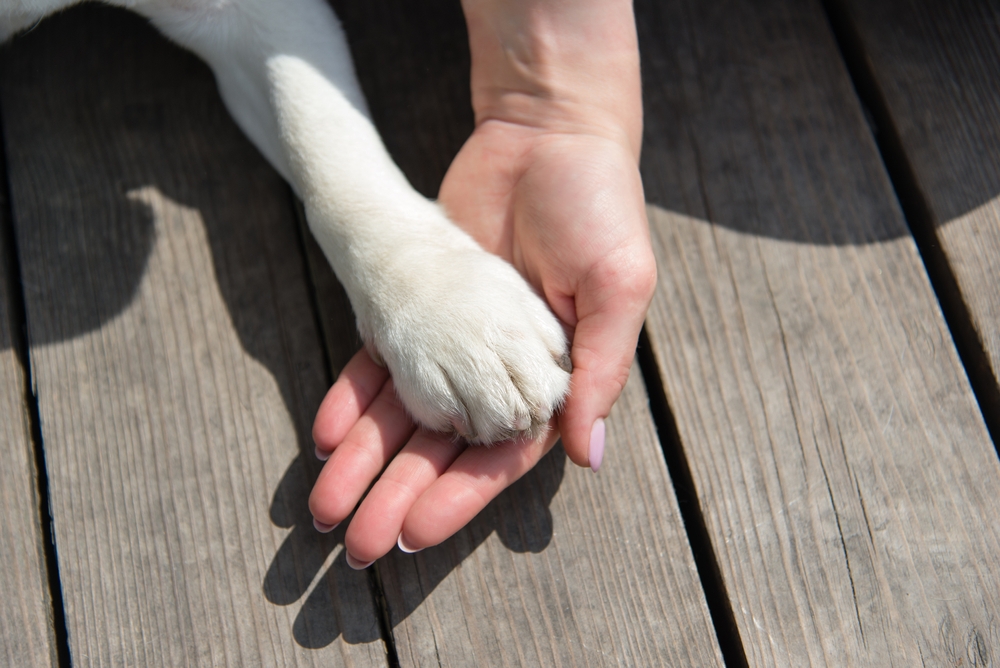How to Give Your Pet First Aid: Essential Steps Before Reaching the Vet
With accidents and emergencies happening when we least expect them, being prepared can make all the difference in case something appears. It’s important to learn some basic first aid skills for your pet and keep a well-stocked pet first aid kit that can help you maintain your calm in case these situations occur and handle it all more confidently.
You need to know what you can safely manage by yourself and what steps to take before heading to the vet, plus know when there’s a need for immediate professional care. This article will be useful, but you can consider taking a pet first-aid course as well. See if there is any offered by a nearby veterinary hospital. This is a simple way to gain peace of mind and always be ready to help your furry friend when they need you most.

Build a first aid kit for your pet
Having the right tools on hand can really make all the difference in times of need. A pet first-aid kit with essential items that are stored in an easy-to-reach spot allows you to act quickly and keep your calm. Make sure you keep it out of reach of children.
How to create a first aid kit
Choose a storage box that’s clearly labeled as being your pet’s first aid kit and include these essentials:
For wound care:
- Saline wound flush
- Cotton balls and swabs
- Self-adhering bandages
- Adhesive medical tape
- Rolled gauze
- Absorbent, non-stick 3″ x 3″ gauze pads
Medications and Treatments:
- 3% Hydrogen Peroxide
- Povidone-iodine or chlorhexidine wash
- Styptic powder (or cornstarch in a pinch)
- Antibacterial spray or ointment
- Diphenhydramine
Emergency Tools:
- Small flashlight
- Hemostats/forceps
- Blunt-ended scissors
- Tweezers
- Rectal thermometer with lubricant
Comfort and Safety:
- Leash and collar
- Puppy pads
- Large and small towels
- Soft muzzle (do NOT muzzle if your pet is vomiting)
Other Essentials:
- Disposable gloves
- Collapsible water bowl
- A small bottle of water
- Oral syringe
- Preservative-free saline eyewash
- Corn syrup (for low blood sugar emergencies)
- Artificial tear drops
- Hypoallergenic dog shampoo
Make sure you check your kit every few months to replace and restick items and make sure everything works properly.

Basics and safety tips
When you’re dealing with an emergency, your pet’s safety and comfort are key, and here is how to approach the situation.
First, make sure there are no additional dangers both to you and your pet before starting the first aid. Keep in mind that even the gentlest pets can lash out when they are scared or in pain. If it’s needed, use a muzzle or gauze to protect yourself, but never muzzle your pet if they’re vomiting to not cause them to inhale the vomit.
Keep your pet warm (unless they are not overheated), minimize movement, and keep them calm, especially if you suspect broken bones, trauma, or neurological issues. Before starting any treatment, contact your veterinarian to guide you on what to do and how to safely transport your pet.
Treating burns
Burns happen instantly, and the way you respond makes a huge difference in your pet’s recovery.
First things first, cool the burn quickly. In case of chemical burns, run cool water over the affected area for 20 minutes to flush the irritant away. For other burns, gently place a washcloth on the burn in a mixture of ice and water. Don’t soak your pet to prevent them from getting too cold.
Make sure your pet stays warm and as comfortable as possible while treating the burn. NEVER apply ice directly to the burn, as it can cause more damage. Do NOT touch the area unnecessarily or break any blister, because it increases the risk of infection. NEVER apply ointments, creams, or sprays because they can interfere with the healing process or make things worse. Ointments and cyca sprays, for example, can also cause burns.
Call your veterinarian immediately, even for a minor burn. Burns are serious, and they need urgent medical attention. Your vet will let you know about the next steps to make sure you can offer your pet the further care they need.
It’s all about quick action and avoiding unnecessary treatments. This approach will minimize pain and prevent complications until professional care.
Help a choking pet
Choking can be terrifying, but it’s crucial to stay calm and act carefully.
A choking pet can even bite out of panic, so be cautious when you try to help them. Call your veterinarian for help, and they can tell you the steps based on your pet’s condition.
The basic steps are to check for obvious blockages. Check your pet’s mouth and look for any visible foreign objects. If you see something, use hemostats or forceps to remove it. You need to be extremely cautious not to push the object further down the throat.
If your pet collapses or you can’t remove the object, lay your pet on its side with its head and neck extended straight. Use both hands and apply firm and quick pressure to the rib cage 3 or 4 times. You need to create bursts of air from their lungs to dislodge the object.
Choking is an extreme emergency, so even if you remove the object, it’s crucial to bring your pet to a vet immediately to make sure there’s no other damage or risk. By acting quickly and carefully, you can save your pet’s life.
How to treat bleeding wounds
First, stop the bleeding by applying light pressure to the wound with a clean gauze pad. Hold it steady for 3 to 5 minutes until the bleeding stops. Don’t check it too frequently because it can disrupt clotting.
Meanwhile, you should prepare the wound. If you have clippers, trim the fur around the wound to keep the area clean. Apply sterile lube over the wound to protect it from debris while clipping. When you’re done, carefully remove the lube and flush the wound with sterile saline to wash away any dirt or debris.
Afterward, gently pat the area dry and apply another layer of sterile lube for protection; use clean gauze pads and bandage wrap to cover the wound. Make sure the wrap isn’t too tight, so if you notice any swelling or discolored skin, remove the bandage and seek veterinary care immediately.
For deep, large, and non-healing wounds, or if your pet shows signs of pain impossible for home care to handle it, contact a veterinarian. It’s better to try to avoid giving your pet any over-the-counter pain medications because many are toxic to dogs and cats.
For minor scrapes, you can clean the area once a day with an antibacterial wash and apply antibacterial ointment several times a day. Keep them away from licking or chewing the wound, so have them wear a cone until it’s safely healed.

How to treat fight wounds or punctures
When pets get into a fight, wounds or punctures can happen. They almost always need professional care, and here is what you can do to stabilize your pet before heading to the vet.
Keep in mind that if your pet is panicked or in pain, it may act unpredictably.
First, control the bleeding. Use a clean gauze pad and apply light pressure to the wound until the bleeding stops. Don’t remove the pad too soon so the blood has time to clot. Once you have bleeding wound control, flush the wound with sterile saline to remove bacteria and dirt. Apply sterile lube to cover the wound, and take care not to wrap too tightly, as this can restrict circulation.
What’s different in the case of fight wounds and punctures is that they often harbor bacteria that can cause deep infection. The next step is to get your pet to the vet for proper treatment and cleaning. A veterinarian can flush the wound more thoroughly and provide antibiotics to prevent infection. They will also recommend safe pain management options for your pet.
Even if the wound seems small, better safe than sorry. Fighting wounds can bring many complications without the right care.
How to handle poisoning or toxin exposure
Another life-threatening emergency is poisoning. Take quick and careful action to make a difference. If your pet has come into contact with a toxin or ingested something harmful, this is how you should respond.
In case a toxic product is on their skin or in their eyes, wash the affected area with soap and water. For their eyes, use a saline eye wash to rinse. After you apply the treatment, call your vet and discuss the next steps.
If your pet has ingested a poisonous substance, contact ASPCA Poison Control or the Pet Poison Helpline, available 24/7. They will provide guidance specific to your pet’s situation. Collect any vomit, packaging, or material if possible to allow your veterinarian to evaluate the substance. Take your pet to a vet facility as soon as possible.
It’s important to not induce vomiting without consulting a veterinarian first. Moreover, never induce vomiting if your pet is weak or unconscious, or in the more difficult cases when they have seizures.
Fingers crossed to never find yourself in any of these situations, but if accidents happen, follow the instructions carefully and bring your dog to the vet as soon as possible.
You can find vet-approved pet first aid kits on Amazon. Take a look at this one.
If you found our article useful, read this one next: 10 Medications That Can Harm Your Dog












